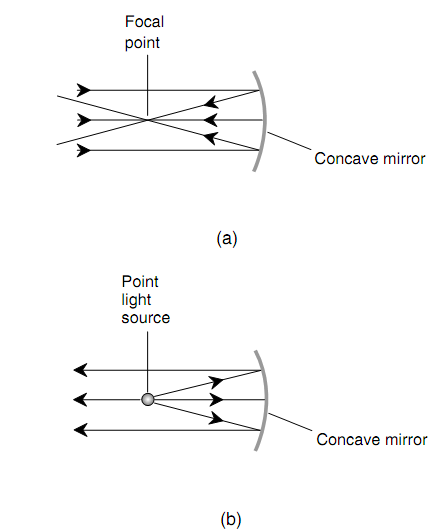Concave Mirror:
The concave mirror reflects light rays in a way similar to the manner a convex lens refract them. Whenever incident rays are parallel to each other and to the axis of the mirror, they are reflected therefore they converge at a focal point (as shown in figure below). If a point source of light is located at the focal point, the concave mirror reflects the rays therefore they appear parallel (as shown in figure below).

Figure: (a) A concave mirror focuses parallel light rays to a point. (b) The similar mirror collimates light from a point source at the focus.
The features of a concave mirror base on the size of the reflecting surface, and also on the radius of curvature. The larger the light-gathering region, the greater is the light-gathering power. The minor the radius of curvature, the shorter is the focal length. When you look at your reflection in a convex mirror, you will view the similar effect which you would examine if you positioned a convex lens up against the flat mirror.
The concave mirrors can have spherical surfaces, though the finest mirrors have surfaces which follow the contour of an idealized 3-dimensional figure termed as a paraboloid. The paraboloid outcomes from the rotation of a parabola, like that having the equation y = x2 in rectangular coordinates, around its axis. Whenever the radius of curvature is large as compared with the size of the reflecting surface, the difference among a spherical mirror and a paraboloidal mirror (more generally termed as a parabolic mirror) is not observable to the casual observer. Though, it makes a big difference whenever the mirror is used in a telescope.